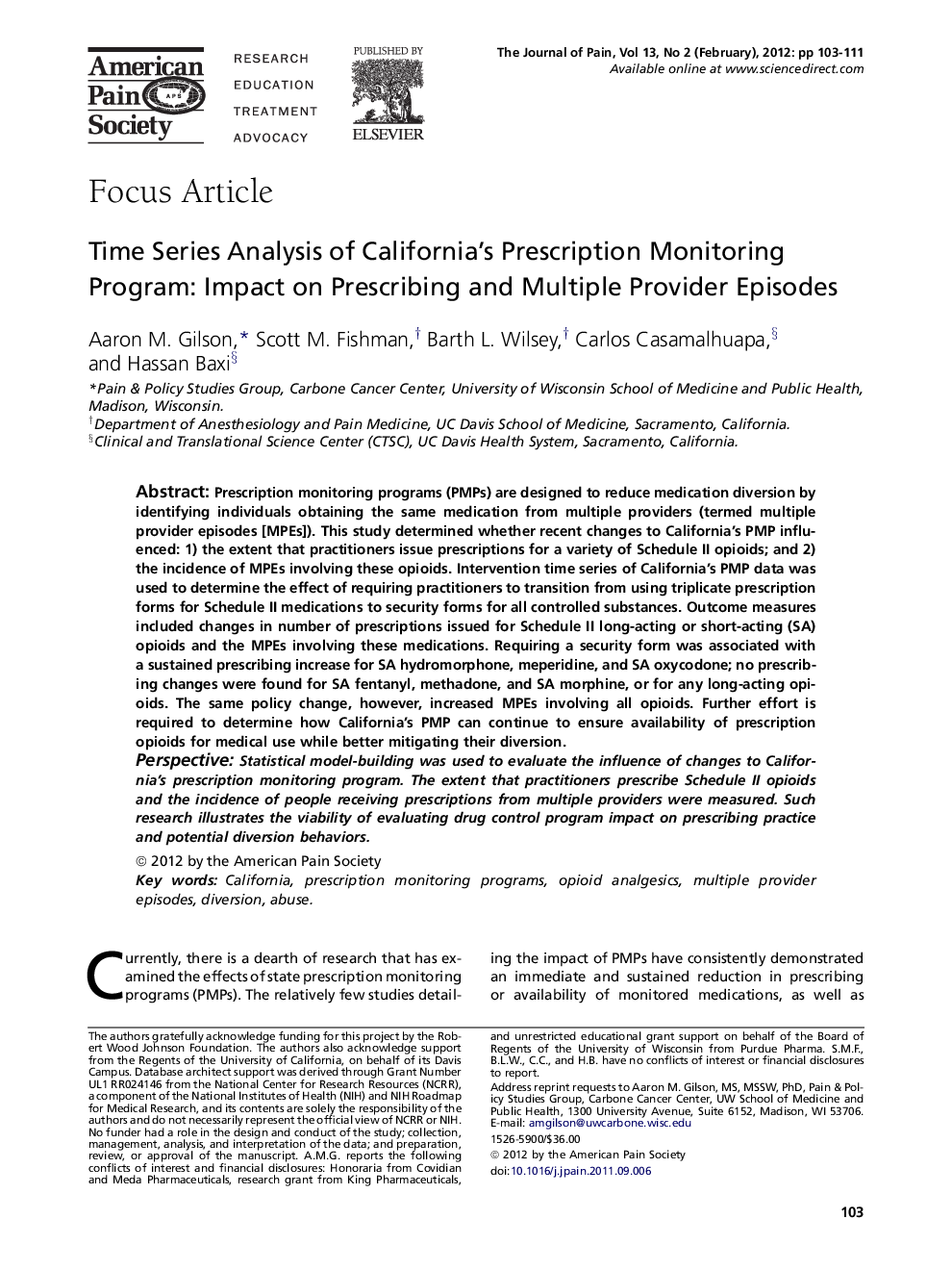| Article ID | Journal | Published Year | Pages | File Type |
|---|---|---|---|---|
| 2734165 | The Journal of Pain | 2012 | 9 Pages |
Prescription monitoring programs (PMPs) are designed to reduce medication diversion by identifying individuals obtaining the same medication from multiple providers (termed multiple provider episodes [MPEs]). This study determined whether recent changes to California’s PMP influenced: 1) the extent that practitioners issue prescriptions for a variety of Schedule II opioids; and 2) the incidence of MPEs involving these opioids. Intervention time series of California’s PMP data was used to determine the effect of requiring practitioners to transition from using triplicate prescription forms for Schedule II medications to security forms for all controlled substances. Outcome measures included changes in number of prescriptions issued for Schedule II long-acting or short-acting (SA) opioids and the MPEs involving these medications. Requiring a security form was associated with a sustained prescribing increase for SA hydromorphone, meperidine, and SA oxycodone; no prescribing changes were found for SA fentanyl, methadone, and SA morphine, or for any long-acting opioids. The same policy change, however, increased MPEs involving all opioids. Further effort is required to determine how California’s PMP can continue to ensure availability of prescription opioids for medical use while better mitigating their diversion.PerspectiveStatistical model-building was used to evaluate the influence of changes to California’s prescription monitoring program. The extent that practitioners prescribe Schedule II opioids and the incidence of people receiving prescriptions from multiple providers were measured. Such research illustrates the viability of evaluating drug control program impact on prescribing practice and potential diversion behaviors.
